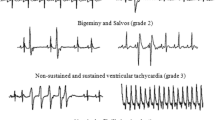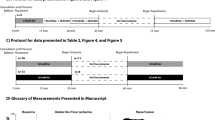Summary
Whether the ATP-sensitive potassium channel opener pinacidil can provide myocardial protective effects in prolonged isolated global ischemic rat heart was investigated. On modified isolated rat working heart model, 40 hearts were divided into four groups randomly: Hyperpolarized arrest H-K solution containing pinacidil (50 μmol/L) (P1 and P2) and depolarized arrest St. Thomas' solution (S1 and S2) subjected to 15 C hypothermia, 60 min (P1 and S1) or 120 min (P1 and S2) of ischemia and 30 min reperfusion. The experimental indices included cardioplegic efficiency, cardiac function, coronary blood flow, myocardial enzyme release, myocardial water and ATP content. Hyperpolarized arrest provided significantly better recovery of cardiac function than depolarized arrest. Postischemic coronary flow and myocardial ATP content were higher. The arrest time of electro-mechanical activities were longer than depolarized arrest. There were no differences among the groups in myocardial water contents. The hyperpolarized arrest solution containing pinacidil can provide a marked myocardial protective effect during prolonged hypothermic myocardial ischemia.
Similar content being viewed by others
References
Lawton J S, Hsia P W, Allen C Tet al. Myocardial protection in the acutely injured heart: hyperpolarizing versus depolarizing hypothermic cardioplegia. J Thorac Cardiovasc Surg, 1997, 113: 567
Ducke C T, Stephenson E R, Jayawant A Met al. Potassium channel openers: are they effective as pretreatment or additives to cardioplegia? Ann Thorac Surg, 2000, 69: 1363
Jayawant A M, Stephenson E R, Matte G Set al. Potassium-channel opener cardiaoplegia is superior to St. Thomas' solution in the intact animal. Ann Thorac Surg, 1999, 68: 67
Gross G J, Auchampach J A. Role of ATP dependent potassium channels in myocardial ischemia. Cardiovasc Res, 1992, 26: 1011
Steinberg M I, Wiest S A, Zimmerman K Met al. Chiral recognition of pinacidil and its 3-pyridyl isomer by canine cardiac and smooth muscle: antagonism by sulfonylureas. J Pharmacol Exper Therap 1991, 256: 222
Maskal S L, Fields C E, Cohen N Met al. Persistent electrical activity during hyperpolarized cardiac arrest does not affect postischemic myocardial recovery. Surg Forum, 1995, 46: 222
Author information
Authors and Affiliations
Additional information
Hu Zhiwei, male, born 1963, Doctor in Charge
This project was supported by a grant from Educational Ministry Foundation of China (No. [2001]345).
Rights and permissions
About this article
Cite this article
Zhiwei, H., Kailun, Z. & Wendong, W. Protective effects of hyperpolarizing cardioplegia with pinacidil on myocardium in rats. Current Medical Science 22, 31–33 (2002). https://doi.org/10.1007/BF02904782
Received:
Published:
Issue Date:
DOI: https://doi.org/10.1007/BF02904782




